

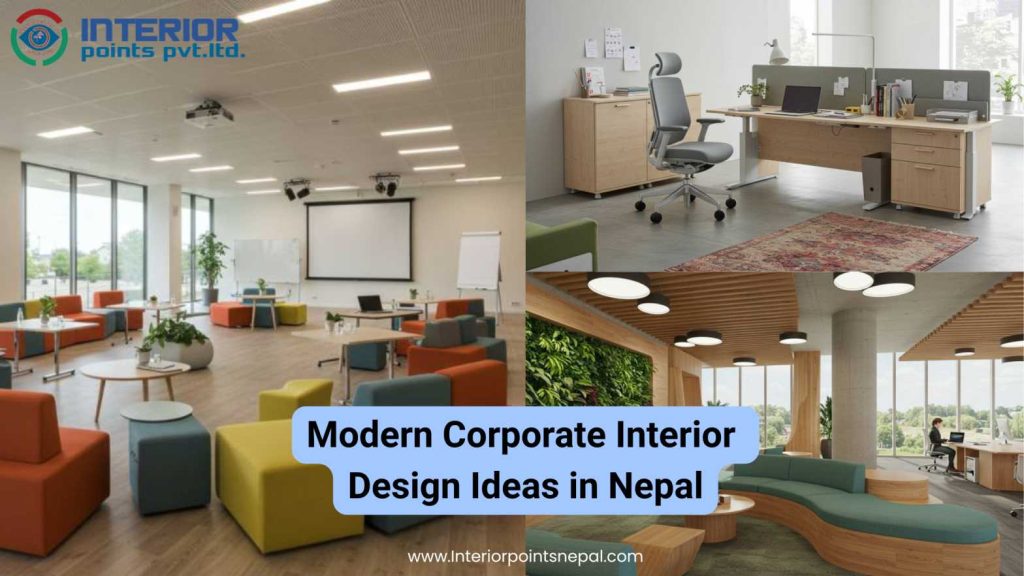
In Nepal, where tradition meets modern life, office design is changing to fit the needs of today’s businesses while still honoring the country’s rich culture. Modern offices are not just about being practical anymore—they aim to be inspiring, eco-friendly, and connected to local values. A well-designed office can improve employee productivity and show what a company stands for. This blog shares creative and useful ideas for designing modern office spaces in Nepal, with tips that suit the local style and needs.

In Nepal, where tradition meets modern life, office design is changing to fit the needs of today’s businesses while still honoring the country’s rich culture. Modern offices are not just about being practical anymore—they aim to be inspiring, eco-friendly, and connected to local values. A well-designed office can improve employee productivity and show what a company stands for. This blog shares creative and useful ideas for designing modern office spaces in Nepal, with tips that suit the local style and needs.

Incorporating biophilic elements like indoor plants, vertical gardens, and large windows that maximize sunlight is becoming a defining feature in Nepali office interiors. Native plants such as Areca Palm, Snake Plant, and Money Plant are commonly used due to their low maintenance and air-purifying qualities. These elements not only enhance aesthetics but also improve employee well-being and productivity by reconnecting the indoors with nature.
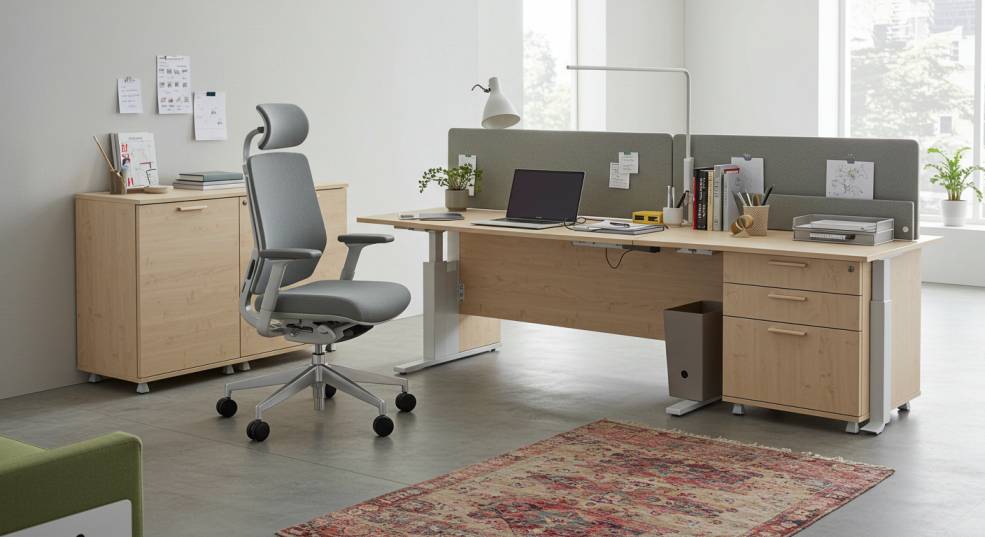
Comfort meets design with ergonomic office chairs, height-adjustable desks, and modular seating options. In Nepal, suppliers like Bajra Interiors, Furniture Land, and Kunal Furnishing offer locally made or imported ergonomic furniture that aligns with both comfort and modern aesthetics. Investing in quality furniture reduces workplace fatigue and supports a healthier posture for employees.
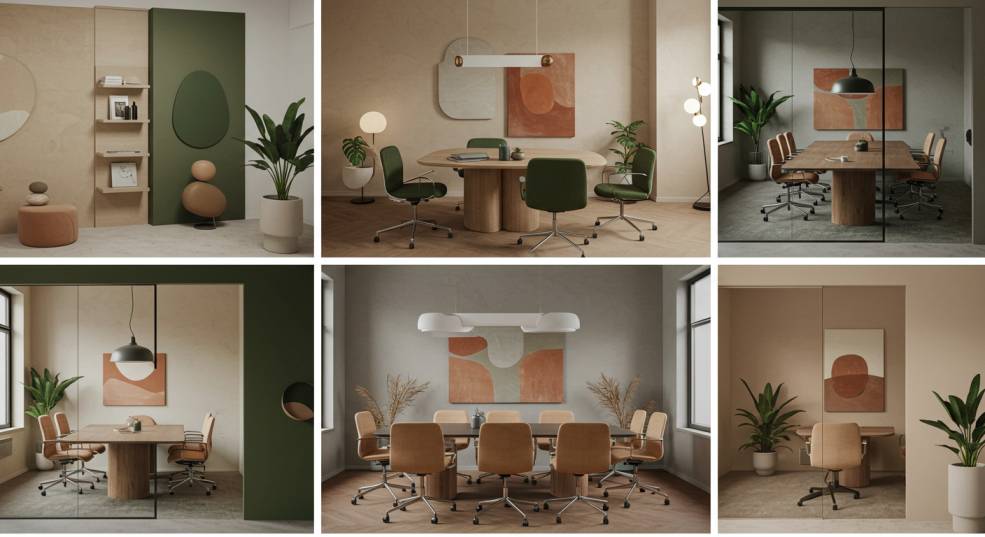
Modern corporate spaces in Nepal often adopt soft neutral tones—like greys, beige, and off-whites—combined with earthy accents to create a professional and soothing environment. Color psychology suggests that such palettes can reduce stress and improve focus, making them ideal for office settings. Accents of blue or green can be added to promote calmness and creativity.
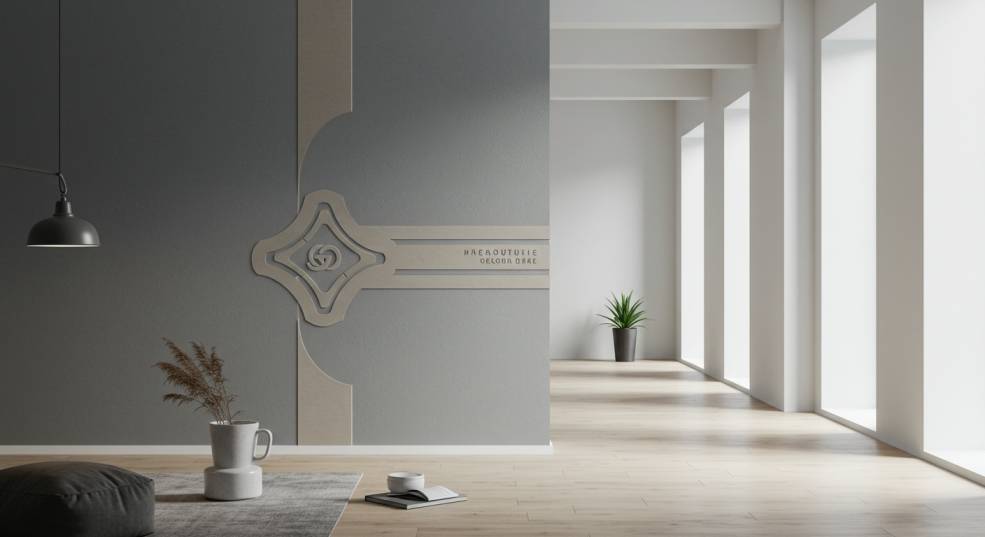
Walls are used strategically to reinforce brand identity without overwhelming the space. Subtle logo placements, branded color accents, and minimalist art inspired by local Nepali themes can enhance a company’s image. Offices can feature custom artworks from local artists or digital murals inspired by Nepali culture, such as mountain silhouettes or traditional Mandala patterns.
Also Read: Smart Interior Design Solutions for Urban Homes in Kathmandu
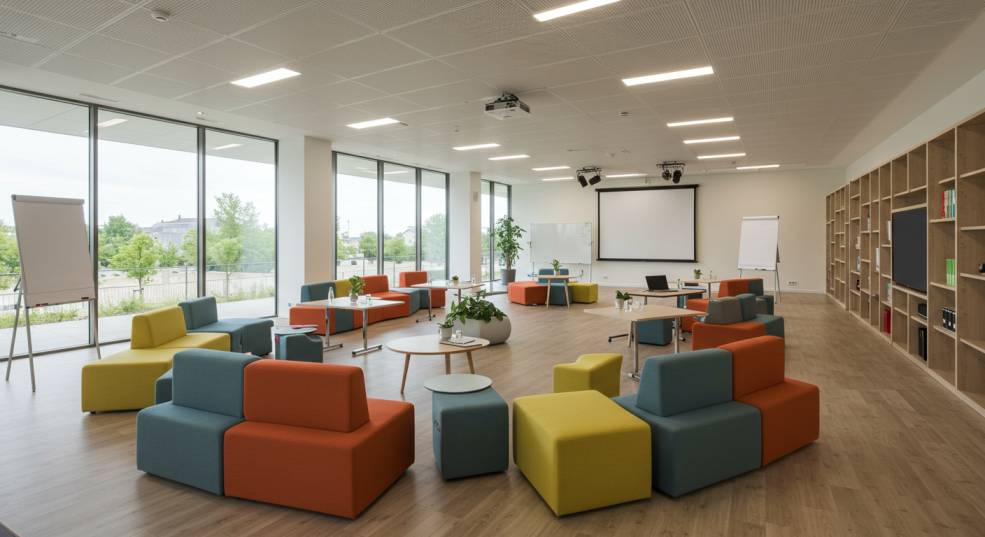
With space at a premium in cities like Kathmandu and Pokhara, compact yet flexible meeting areas are essential. Movable partitions, foldable furniture, and modular tables allow one room to serve multiple purposes—from board meetings to team huddles or training sessions. This is especially beneficial for startups and small businesses looking to maximize utility without sacrificing style.
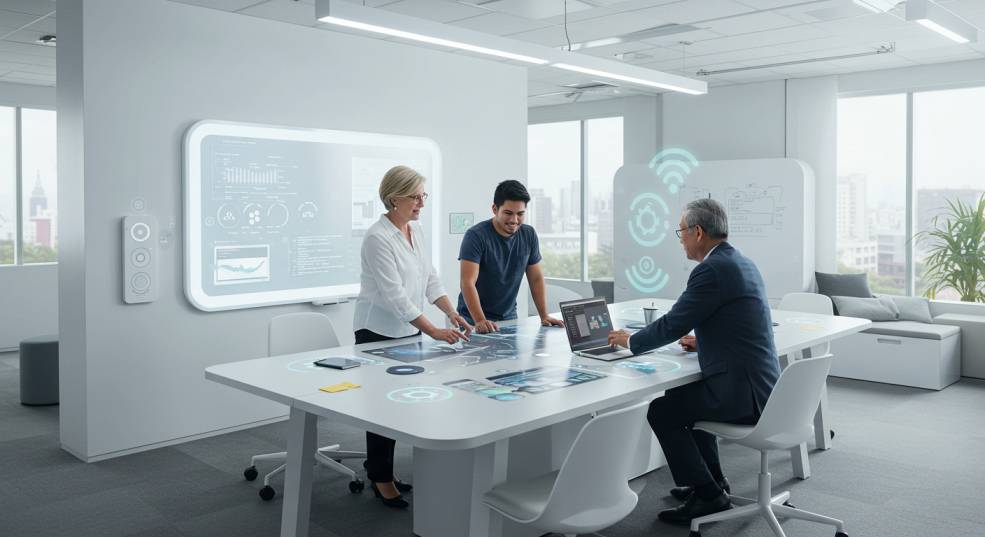
Companies are increasingly investing in smart tech like automated lighting, temperature controls, and digital access systems to create efficient and sustainable workplaces. Products from local distributors such as Him Electronics or TechSansar offer smart solutions compatible with Nepali office infrastructure. These upgrades not only modernize the workplace but also reduce energy costs and enhance security.
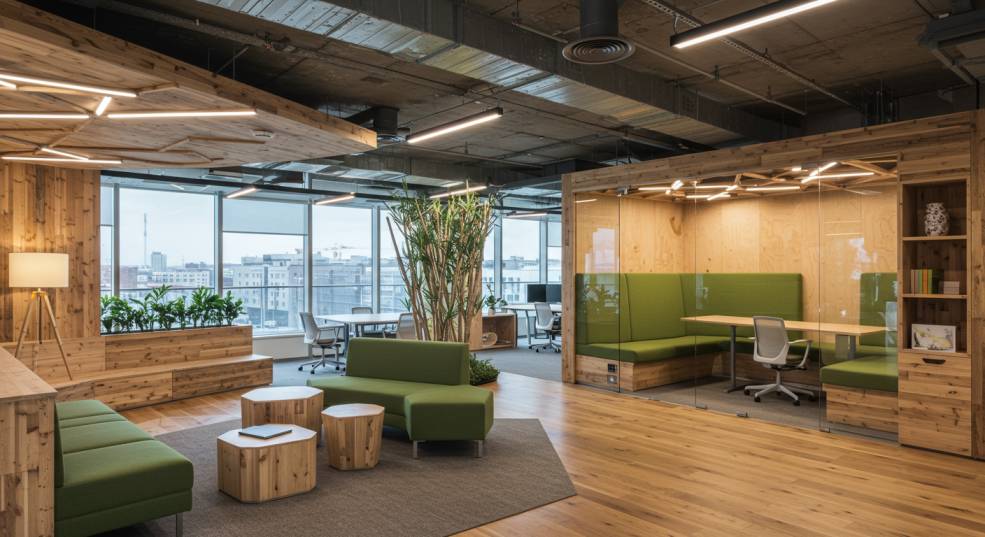
Sustainability is gaining traction in the corporate interior design scene in Nepal. Designers are opting for locally sourced and eco-friendly materials such as bamboo, reclaimed wood, and stone for furniture and wall accents. These elements not only reduce environmental impact but also reflect a company’s commitment to responsible business practices, appealing to environmentally conscious employees and clients.
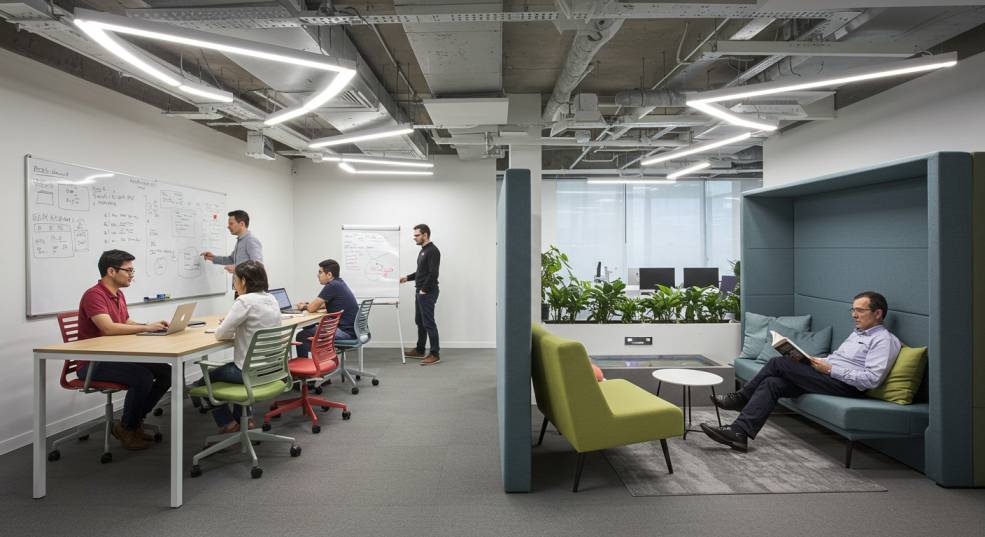
Modern offices are integrating cozy breakout spaces where employees can relax, brainstorm, or take short breaks. These zones may include bean bags, lounge chairs, mini libraries, or coffee corners. Nepali offices like Fusemachines Nepal and Leapfrog Technology have set examples by designing employee-focused areas that promote creativity, reduce stress, and support mental wellness.
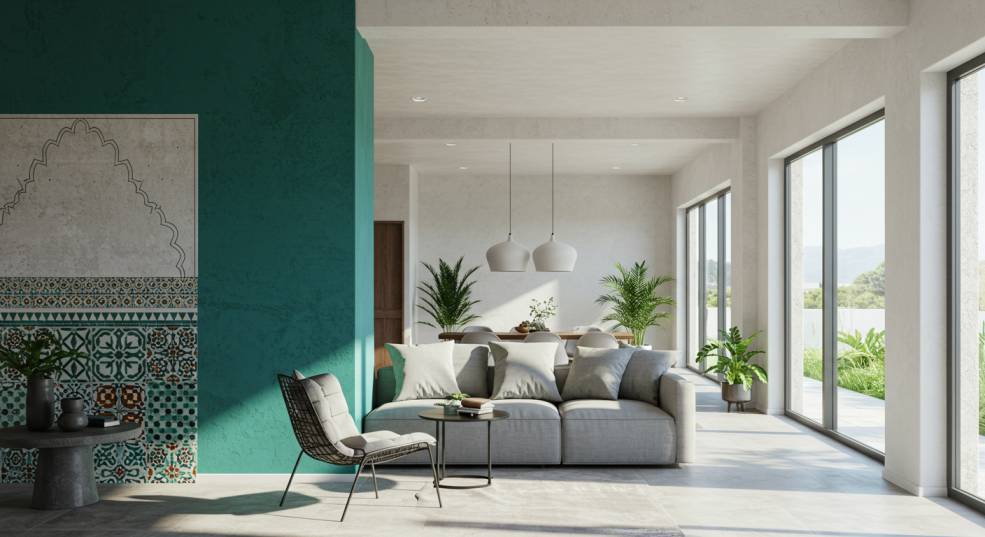
A growing trend in Nepal involves blending contemporary office aesthetics with traditional design elements. This includes carved wooden panels, Thangka-inspired art, or copper fixtures that reflect local heritage. When balanced well, this fusion creates a unique corporate identity that respects cultural roots while showcasing modernity, making a lasting impression on both employees and visitors.
Modern corporate interior design in Nepal is about creating spaces that inspire productivity, reflect cultural heritage, and embrace sustainability. By blending biophilic elements, traditional craftsmanship, open layouts, smart technology, and minimalist aesthetics, businesses can craft offices that are both functional and visually captivating. Whether you’re a startup in Kathmandu or an established firm, these ideas can help transform your workspace into a modern sanctuary that resonates with Nepal’s unique identity.
Ans: Modern corporate interior design in Nepal stands out due to its blend of traditional elements, like Newari woodwork and Dhaka fabrics, with contemporary trends such as minimalism and biophilic design. This fusion creates spaces that are culturally resonant, functional, and aligned with global standards.
Ans: Use eco-friendly materials like bamboo, reclaimed wood, and recycled metal. Incorporate energy-efficient appliances, solar panels, and water-saving fixtures. Sourcing materials locally also reduces environmental impact and supports Nepal’s economy.
Ans: Open floor plans promote collaboration, flexibility, and a sense of community, making them ideal for startups and creative agencies. They maximize space in smaller offices and can be enhanced with modular furniture and acoustic panels for functionality.
Ans: Pair traditional Nepali elements like Thangka paintings, Dhaka fabrics, or Newari-inspired woodwork with sleek, minimalist furniture and neutral color palettes. This creates a professional look while honoring Nepal’s cultural heritage.
Ans: Biophilic design integrates natural elements like plants, natural light, and earthy materials into indoor spaces. It’s popular in Nepal due to the country’s stunning landscapes and growing emphasis on sustainability, creating calming and productive work environments.
Ans: Repurpose existing furniture, source materials from local markets, and implement designs in phases. DIY decor and focusing on high-impact areas like reception spaces can also keep costs low while achieving a modern look.
Your Dream Space Starts Here Get Exclusive Design Straight Your Inbox!